Turning 60 in Sicily: Growing old can be beautiful and delicious
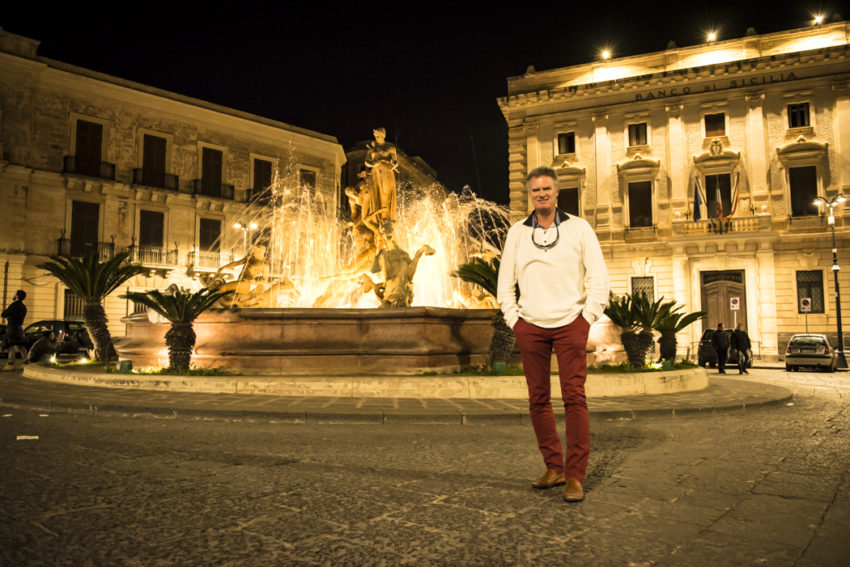
(THE FIRST OF TWO PARTS: SYRACUSE)
SYRACUSE, Italy — I turned 60 last week. When I was younger, that was an age I roughly equated to the Colosseum, pterodactyls and the invention of fire. It’s an age that corresponds with senior discounts, daily glances at obituaries (to make sure you’re not on it) and your first peek around the corner at retirement. It’s 60, for God’s sake! That just sounds old, like “Edsel” or “Mesopotamia.” That’s because 60 is old. I saw a picture of my 40th high school reunion from two years ago and there were gray-haired women with walkers.
However, 60 doesn’t have to be old. I retired two years ago at 57 which transformed retirement from a gasping grasp of one last straw to a new beginning. I also retired to Rome. It’s a city filled with fountains, fountains of youth. It’s an easy formula: Eat fresh food, drink great wine, walk everywhere, discover something new every day. In Rome, I always feel young.
But turning 60 can be jarring. I’ve had horrible milestone birthdays. I spent my 21st passed out in a bar’s parking lot where my fraternity brothers at Oregon left me after I didn’t survive three pitchers of beer and 10-cent hot dog night. My ex-girlfriend in Las Vegas stood me up on my 30th and I wandered around The Strip all night — alone. I spent my 40th in Denver at a comedy concert — alone. My 60th would be different.
It was. It was the best of my life.

You want to know how to feel 20 years younger when you turn a year older, even at 60? Go to a beautiful place with a beautiful woman. I spent four days in Syracuse — the one in Sicily, not upstate New York. How an industrialized city in a North American icebox could be named after a beautiful, sun-splashed town on the banks of the Ionian Sea is like calling your pet iguana Beyonce. In Italian it’s called Siracusa. Maybe Italians have been to New York and tweaked the name.
I took my best birthday present of all, Marina. Marina Pascucci, a graphics design editor and one of the best photographers I’ve ever known, is a “Romana per Romane” (a Roman woman for Roman women). What she says that I don’t understand I can interpret through her myriad of Italian hand gestures. She comes to Sicily often, and Syracuse is high on her list of weekend getaways.
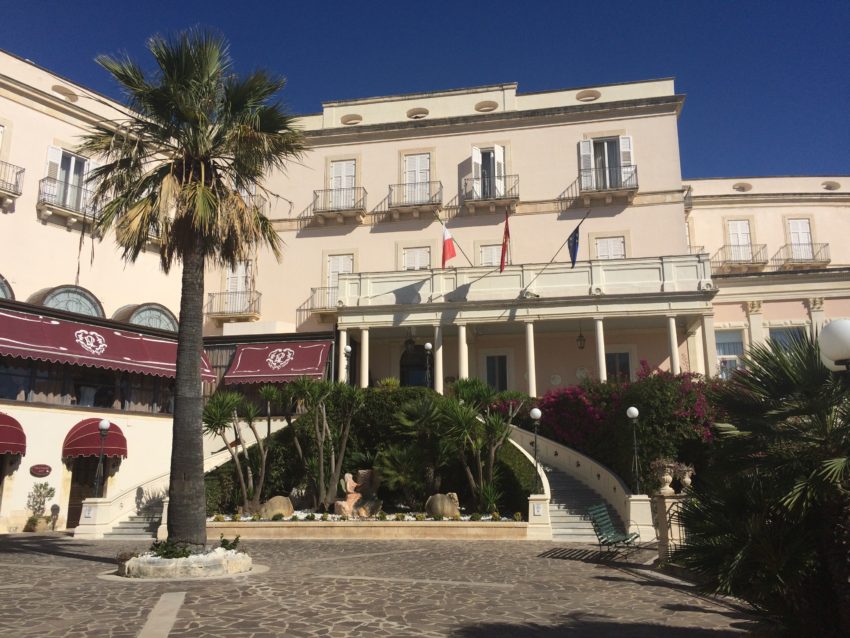
She rented a car to take me along the Baroque Trail, a series of small UNESCO-listed hill towns dripping with beautiful Baroque architecture. Syracuse was our base, and our base in Syracuse was the four-star Grand Hotel Villa Politi. Built in 1871, the Villa Politi has a grandiose presence with a statuesque palm tree in front of a staircase that wraps around a hedge leading to a stately porch area. Guests sit outside and sipped Sicilian wine. A gorgeous pool with turquoise water — FREEZING turquoise March water — sits languidly in the back. Winston Churchill used the Villa Politi as his base during the Allied invasion of Italy in 1943. After returning during a holiday in 1955 said, “I never rested so well in my life.”
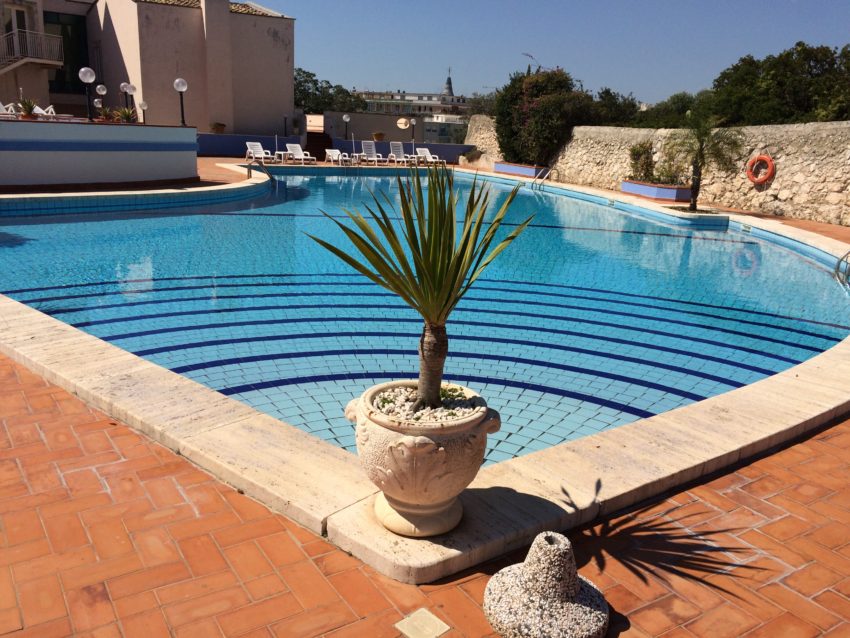
Churchill was 80. Yes, I picked the right hotel to turn 60.
This corner of eastern Sicily gets a bit overshadowed by Taormina, the chic beach town 75 miles to the north that caters to a major summer arts festival and jet setters from all over the world. It’s a preserved medieval town with a great view of the active volcano Mt. Etna but Taormina’s crowds and tourism spoil it for many. As Marina told me, “Taormina is no more Sicilian than Capri is Neapolitan.”
Syracuse, however, still has its charm. It’s like a kind, aging actress who still has her beauty without a lot of surgery. I thought staying young at 60 is difficult. Syracuse has stayed young at 2,750. The Corinthians from the big Greek island of Peloponnese settled Syracuse in 734 B.C. and it became the most beautiful city in the Greek Empire. It was nearly as powerful and prestigious as Athens. Its location on the southeastern coast made it a perfect base for extending an empire. The island neighborhood of Ortygia, which sits like a teardrop off the mainland, became an ideal location to spend time for the next two millennium. Plato, Aeschylus and Archimedes hung out here. It all eventually got swept up in the continual mass colonization of Sicily by the Carthaginians, the Romans, the Arabs, the Normans, the French, the Spanish, the Trumps. Oh, sorry. They only go to Taormina.
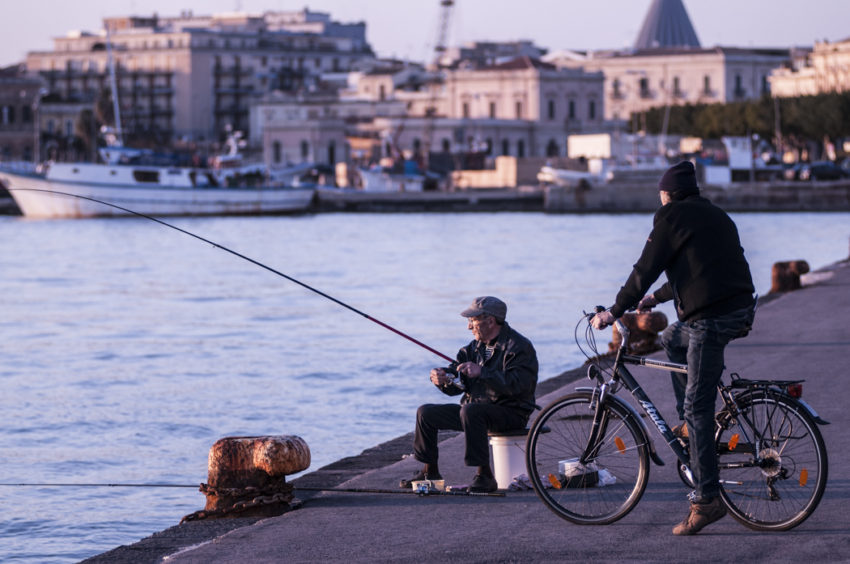
Today, Syracuse is a hodgepodge of many cultures but when we drove into town I thought I knew why all the civilizations left. I saw a collection of dingy buildings and ugly block apartment houses. It didn’t look like the Greeks built Syracuse. It looked like Mussolini did. But we didn’t go into the Parco Archeologico della Neapolis with its Greek amphitheatre, and the collection of cultures is nowhere more evident than in Ortygia. On a day hand scripted for exploring an island — about 70 degrees without a cloud in a turquoise sky — Marina and I walked about a mile down a hill from the hotel. We passed a few more scruffy apartment buildings. Grand Funk Railroad’s “We’re an American Band” blared from one of the open windows.
“This town looks like Battistini,” said Marina, referring to her underwhelming neighborhood on the west side of Rome.
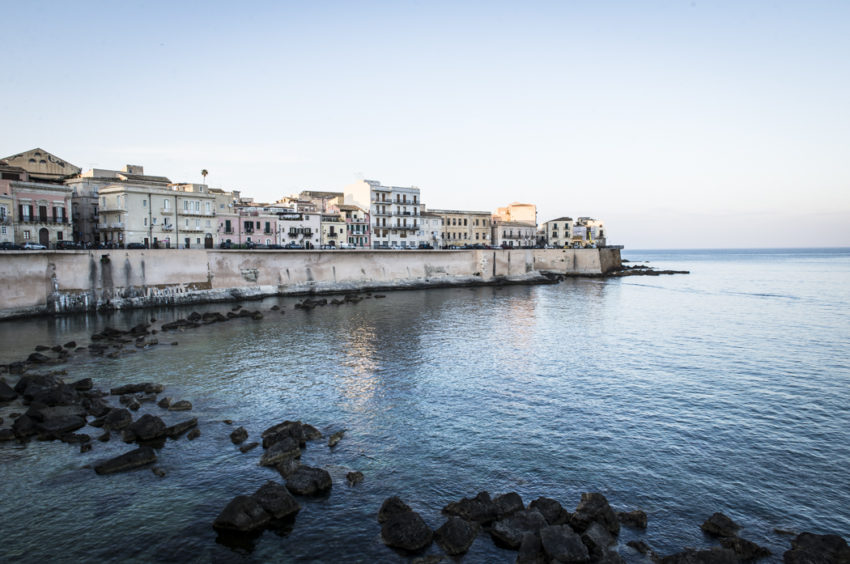
But between the buildings we could tell what all the fuss is about. Sicily is about so many things known around the world. The volcanoes. The food. The mafia. The mystery. In Syracuse, it’s all about the water and the history. We looked to our left and saw two long, rocky jetties. Children sat on the rocks with fishing pools in royal blue water so clear you could see the ocean bottom from where we walked. Beyond the jetties stood Ortygia. At one time this was an R&R spot for the Greek navy. Today it is a hodgepodge of windy, narrow alleys lined with millennium-old churches, cozy restaurants, bakeries and simple apartment houses. Ortygia is shaped like Thailand with a big, round mainland and a tail that narrows to a point where a renovated 12th century castle glistens in the sun. Seafood restaurants and bars line a street opposite the small harbor.
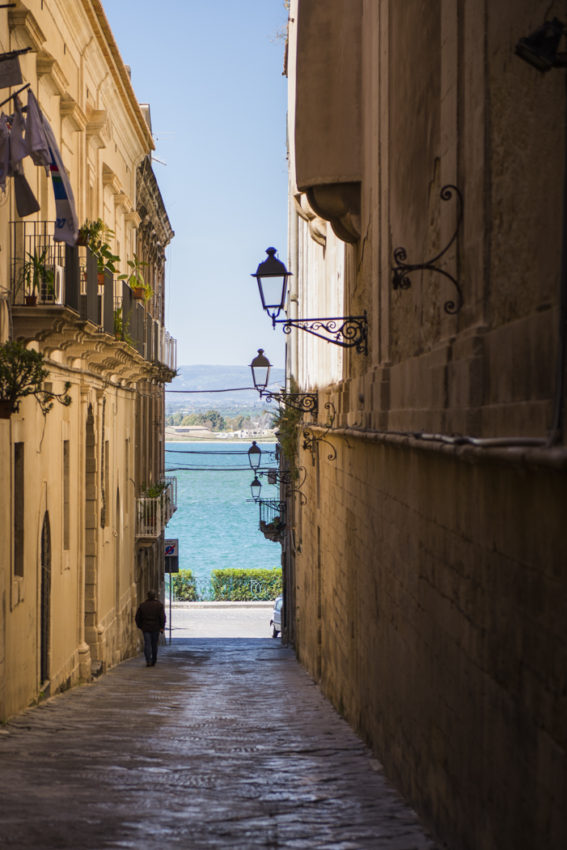
Walking the alleys in Ortygia isn’t like walking in Old Towns in the rest of Italy. The sun-washed buildings all have an aesthetically pleasing uniformity to them. They are pale yellow, the perfect tone to reflect the 2,700 years of history. A fresh coat of paint would make this whole thing look like a real bad painting you see hacks paint in piazzas. We wandered the alleys under a continuous row of cast-iron balconies, all with green vines pouring down toward the street.

We passed by Caravaggio Pizzeria, an ode to Italy’s most famous Renaissance painter who stopped in Syracuse on his run from Roman law after he murdered a man near Rome’s Centro Storico. While in Syracuse in the early 1600s, he was commissioned to paint “The Burial of St. Lucy.” I found it in a nave of the Chiesa di Santa Lucia al Sepolcro. I’m a big-time Caravaggio fan. I’m a fan of anyone who rebels against the Catholic Church during the Renaissance while he’s commissioned by said Catholic Church. His painting is typical Caravaggio, emphasizing the grim task of the muscular gravediggers more than St. Lucy who is lying dead flat on her back nearby.
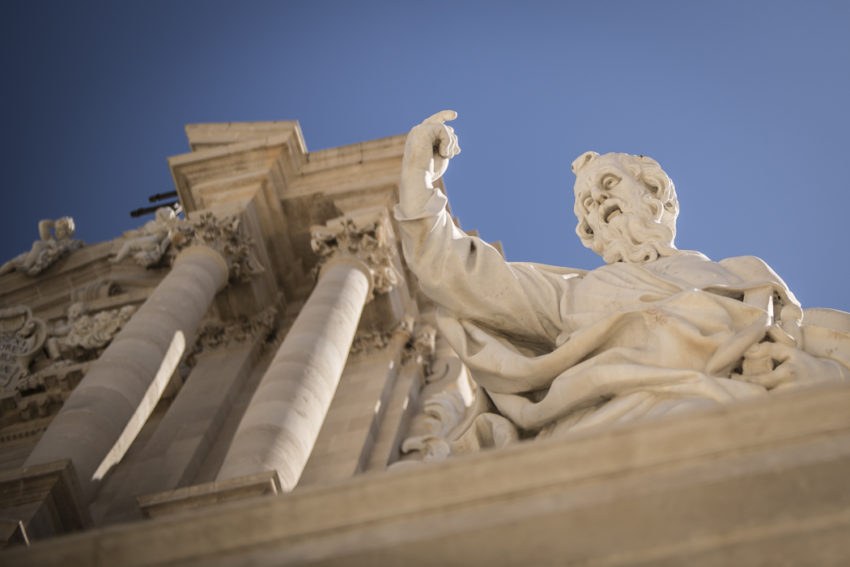
We took a seat at Lungo la Notte Caffe, where a long yellow awning shaded tables with white tablecloths facing the harbor. A row of clay flower boxes adorned the apartments above it. The sun was just setting. A lone sailboat passed through the bright yellow ball dipping into the blue Ionian Sea. It was the day after Easter, a massive Italian celebration known as Pasquetta. I could tell the steady stream of tourists were Italians who dress for the calendar and not the weather. Despite temperatures that felt like high 70s, the Italians strolled the promenade above the harbor with scarves, parkas and sweaters. I kept waiting to see a dog sled.
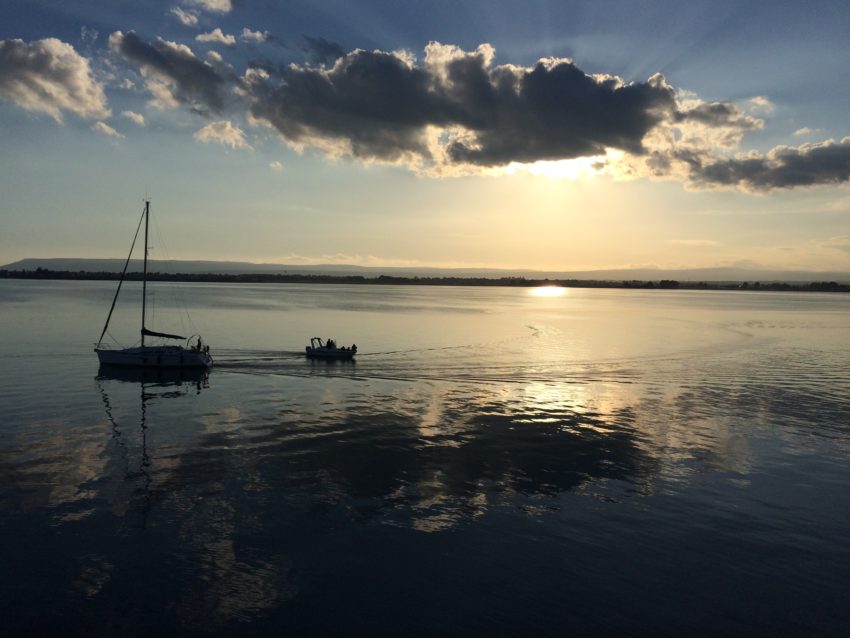
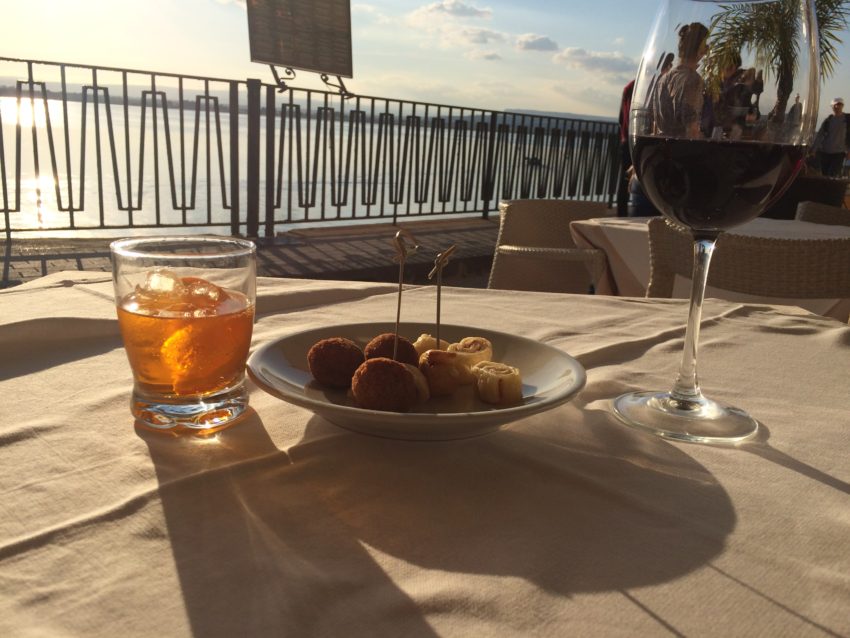
A big part of Pasquetta is a feast. It’s like the Italian Thanksgiving. Go to a person’s house and waves of cheeses and meats and vegetables and pastas, all fresh, come in like you’re a member of the Roman Senate. At Lungo la Notte (Long the Night) we ordered glasses of Nero d’Avola, Sicily’s signature ruby red wine, and were served wonderful finger food. Out came small plates of ascolane, the breaded green olives stuffed with meat, and a lovely local dish called vota vota, warm prosciutto wrapped in little baked pastries and rolled. I sat there with a lovely woman looking at a lovely sea and drinking a lovely wine with the sun warming my short-sleeved arms for the first time since fall. I thought, Getting old isn’t so bad. You just have to find the right place to do it.
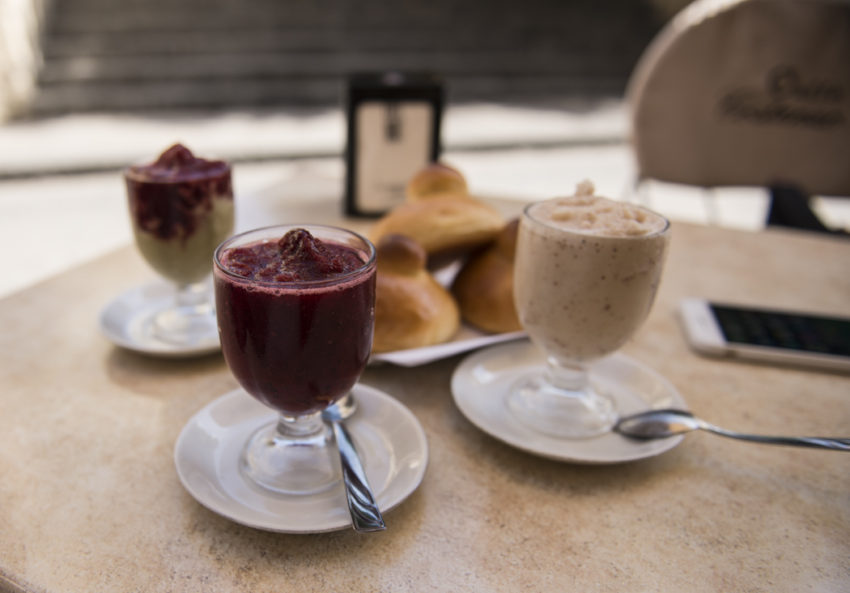
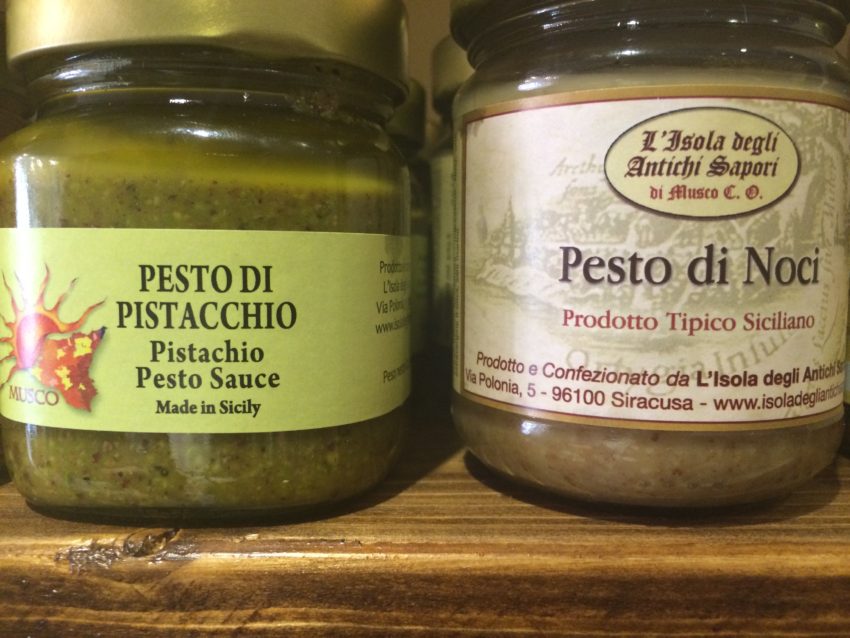
While the Italians were still celebrating Easter, I was just starting to celebrate a birthday. After more than two years in Italy, I’ve learned to celebrate more with food than booze, a concept that if I’d learned earlier in life I might not have cut 10 years off my lifespan. Sicily is a superb place to celebrate with food. Despite a violent history dating back 2,700 years and continuing through mafia car bombings in the 1990s, Sicily remains, at its core, an island. It is surrounded by the clean, clear waters of the Ionian Sea to the east, Mediterranean to the south and Tyrrhenian to the north. Maybe no place in Italy — no, no place in the Mediterranean region — has better seafood than Sicily.


For my birthday, I took Marina (In Italian tradition, the person who’s celebrating the birthday pays, a concept that makes birthday boys even more popular with friends) to Don Camillo. It’s one of Syracuse’s elegant spots, set in in a 600-year-old building with stone walls, an arched stone ceiling and a massive window illuminating an entire wall stacked with Sicilian wine. A waiter in a sharp, blue suit brought me spada miele (honey swordfish), a big fat chunk of swordfish atop a pile of sour vegetables with a spray of honey on the side. It was simply the best swordfish of my life, light but bursting with flavors of the sea. The honey’s sweetness added the perfect contrast to the sour veggies below.
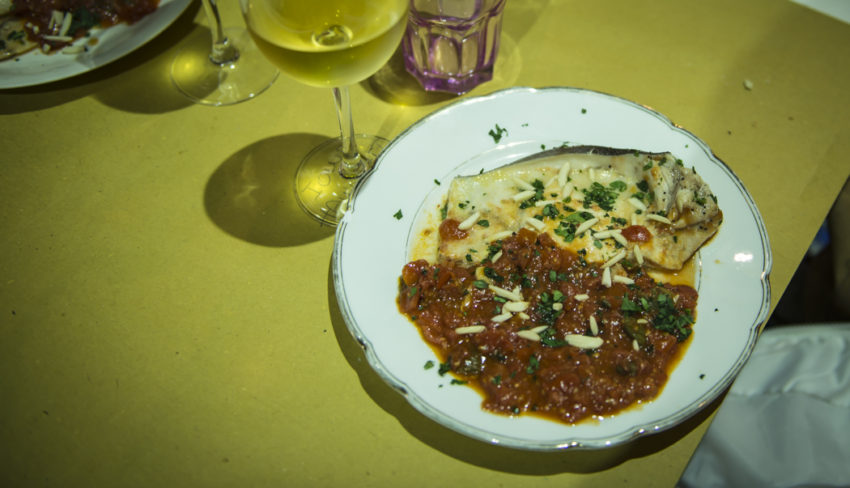
At A Putia delle Cose Buone, a tiny spot with what look like an Italian grandmother’s cushions on wooden chairs and family art on the walls, I had spada Kalbiti: swordfish (at this point I’m afraid to swim in the sea for I’ll get gored) with tomatoes, capers, mint, parsley, almonds and extra virgin olive oil. It was so good, I had to ask the waiter how to say “Very good food” in Sicilian. It’s “Sappi beddu.”
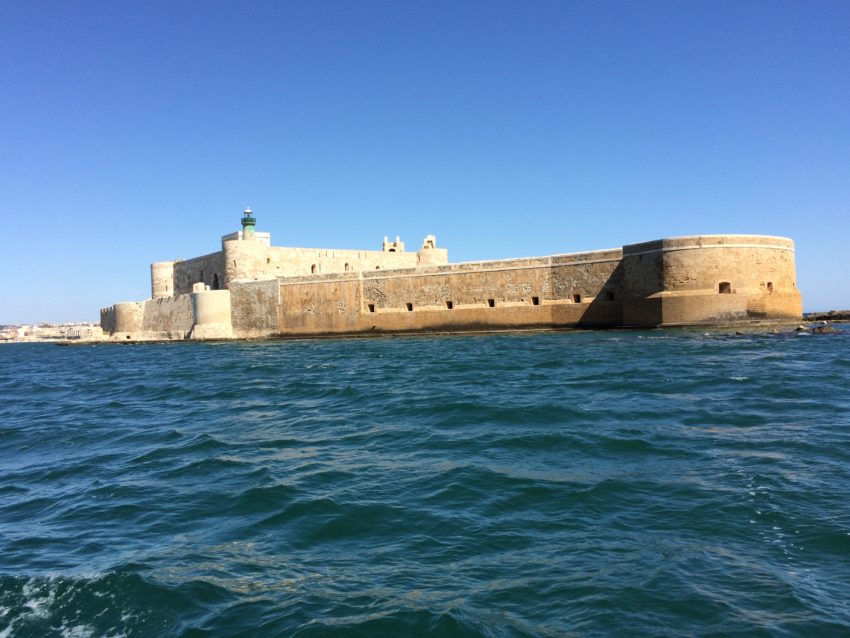
The day of our flight home to Rome I treated myself to a boat cruise around Ortygia. At the bridge connecting Ortygia to mainland Syracuse, I hopped in a large outboard boat with two Italian guys and an Italian woman. The driver was a tall, lean 30ish man with a mop of black hair under a stylish Polo hoody. I wanted more the water experience than a history lesson and the frigid splashes felt good after a morning in a sun that I’m told in August is only suitable for African violets. The sides of the island are tufa, the hardened volcanic crust that looks like white honeycomb. We went around the southern tip for great views of Castello Maniace, which spans much of Sicily’s history. Originally built by the Greek general George Maniakas, Sicily emperor Frederick II rebuilt the castle between 1232-1240. It was later used as residence by queens and criminals of Sicily. Yes, in the 15th century it was a prison. A renovation in 2008 has made white stonery absolutely sparkle in the sunlight.

We passed Mussolini’s World War II monument high upon a cliff and entered two enormous caves formed by holes in the tufa. But before we made it back to harbor, the best thing I saw had nothing to do with history or food or water. I saw, high atop a cliff, a young couple, all alone, kissing in the Sicilian sun.
Sicily at 60. Sappi baddu.
NEXT: SICILY’S BAROQUE TRAIL


April 5, 2016 @ 11:46 am
Love this post John! I am finally returning to Bracciano at the beginning of May, my birthday month. Yes, the whole month is designated Kimberly’s 50th birthday, and yes, it will include travel to Tenerife, Bari, and, yes, to Sicily the birthplace of my ravaging Italian Love Affair! Hope to catch up with you soon.
April 5, 2016 @ 3:28 pm
Great plan, Kimberly. Be sure to take someone special. That helps.
April 6, 2016 @ 12:13 am
Traveling with someone special does make one feel at least young-at-heart. (At least that works for me!) Buon compleanno in ritardo, John!
April 7, 2016 @ 5:01 am
Beautiful memories.I have done the same trip and stayed two streets from Neptunes Pool on Ortygia, a world of history and splendour .
April 7, 2016 @ 9:38 am
Thanks for the note, John. Next time I’m staying in Ortygia. The Grand Hotel is truly grand but public transportation in Syracuse is strictly a rumor.
September 10, 2021 @ 8:17 am
Hi! I really enjoyed your adventure! I’ll be turning 60 in Ortigia in October! Can’t wait! This will be my first time to Sicily, but my family came from Corleone and Bisacquino. Would love to hear any suggestions or recommendations for fun things to do. We’ll have a car, and will be flying round trip from Palermo. We live in New Orleans. Grazie and Ciao! Lori